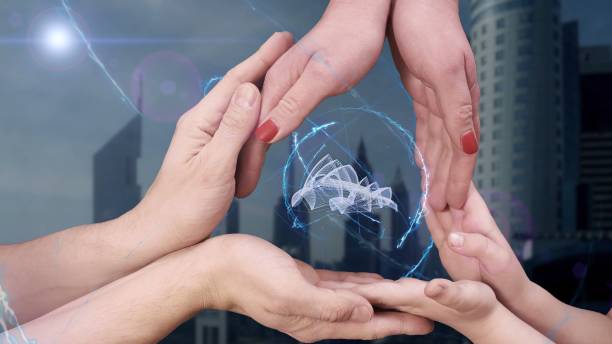Holographic Telepresence: Redefining Remote Communication
The future of telecommunications is stepping out of science fiction and into reality with holographic telepresence. This groundbreaking technology promises to revolutionize how we connect, collaborate, and communicate across distances. As the world becomes increasingly interconnected, holographic telepresence stands poised to bridge the gap between virtual and physical presence, offering an immersive experience that could transform industries and personal interactions alike.

Early experiments with holographic displays were limited by technological constraints, producing low-resolution images that lacked realism. The turn of the millennium saw rapid progress in display technologies, high-speed networks, and image processing algorithms, paving the way for more sophisticated holographic systems.
Current State of Holographic Telepresence
Today, holographic telepresence is no longer a distant dream but an emerging reality. Several tech companies and research institutions are developing systems that can project lifelike, three-dimensional images of people in real-time. These systems use a combination of high-resolution cameras, specialized displays, and advanced software to capture, transmit, and reconstruct 3D images.
One of the most promising approaches involves using light field technology, which captures not just the intensity of light rays but also their direction. This allows for the creation of more realistic and detailed holographic images that can be viewed from multiple angles without the need for special glasses or headsets.
Applications Across Industries
The potential applications of holographic telepresence span numerous sectors. In healthcare, it could enable remote consultations with specialists, allowing doctors to examine patients virtually as if they were in the same room. The education sector could benefit from immersive learning experiences, with lecturers appearing as holograms in classrooms around the world.
Corporate environments stand to gain significantly from this technology. Business meetings could transcend traditional video conferencing, with participants appearing as life-sized holograms, preserving non-verbal cues and spatial awareness crucial for effective communication. The entertainment industry is also exploring holographic performances, potentially revolutionizing live events and concerts.
Technical Challenges and Solutions
Despite the progress, holographic telepresence faces several technical hurdles. One of the primary challenges is the enormous amount of data required to transmit high-quality, real-time 3D images. This necessitates not only ultra-high-speed networks but also sophisticated compression algorithms to make the data transmission feasible.
Researchers are exploring novel approaches to address these challenges. One promising avenue is the use of artificial intelligence to predict and fill in missing data, reducing the overall bandwidth requirements. Another focus area is the development of more efficient light modulation techniques to improve the quality and brightness of holographic projections.
The Road Ahead: Integration and Standardization
As holographic telepresence technology matures, the focus is shifting towards integration and standardization. Industry players are working on creating interoperable systems and protocols to ensure seamless communication across different platforms and devices. This standardization is crucial for widespread adoption and the creation of a holographic communication ecosystem.
The coming years are likely to see increased collaboration between telecommunication companies, hardware manufacturers, and software developers to create end-to-end holographic telepresence solutions. As these systems become more sophisticated and user-friendly, they could potentially replace traditional video conferencing tools in many scenarios.
Ethical and Social Implications
The advent of holographic telepresence also raises important ethical and social questions. Privacy concerns are at the forefront, as these systems could potentially capture and transmit more personal information than traditional communication methods. There’s also the question of digital rights and ownership of holographic representations.
Moreover, the widespread adoption of holographic telepresence could have profound effects on social interactions and work cultures. While it promises to bridge physical distances, it may also blur the lines between virtual and real presence, potentially impacting how we perceive and value face-to-face interactions.
Conclusion
Holographic telepresence represents a significant leap forward in telecommunications technology. As it continues to evolve, it has the potential to reshape how we connect, work, and interact across distances. While technical challenges remain, the rapid pace of innovation in this field suggests that we may soon be entering an era where holographic communication becomes a part of our daily lives, offering new possibilities for immersive and meaningful long-distance interactions.





